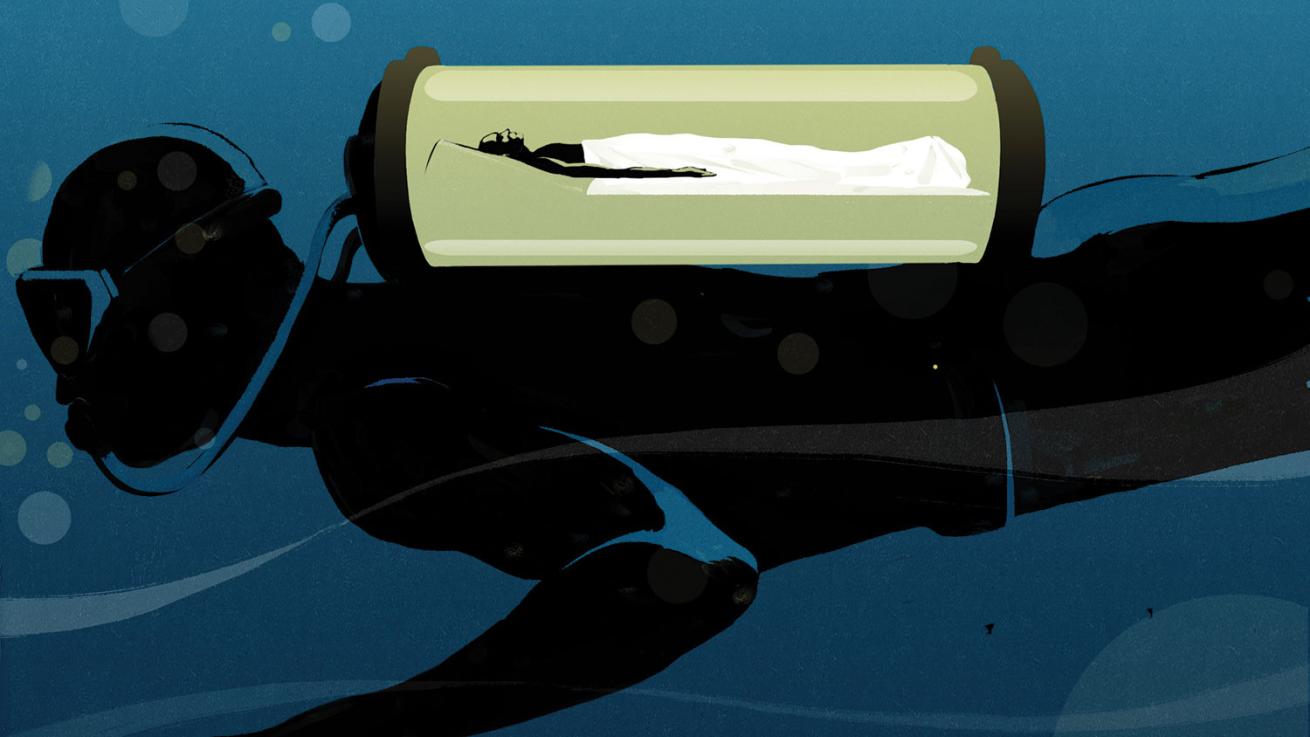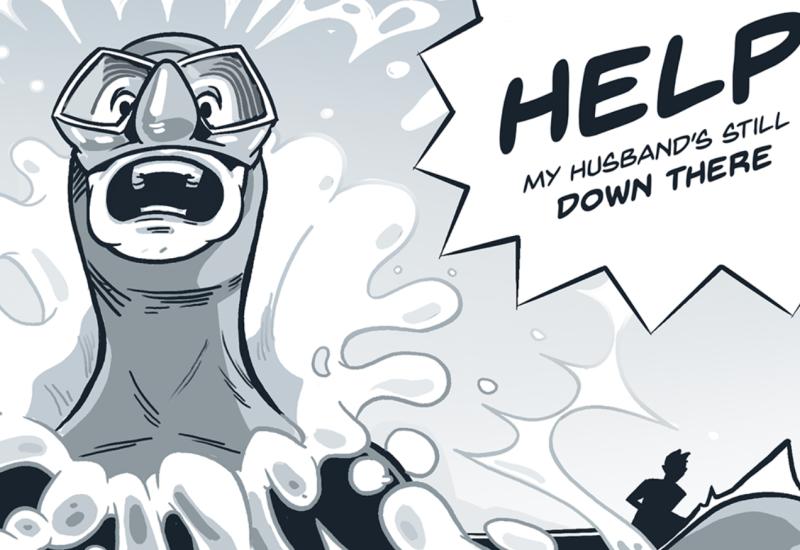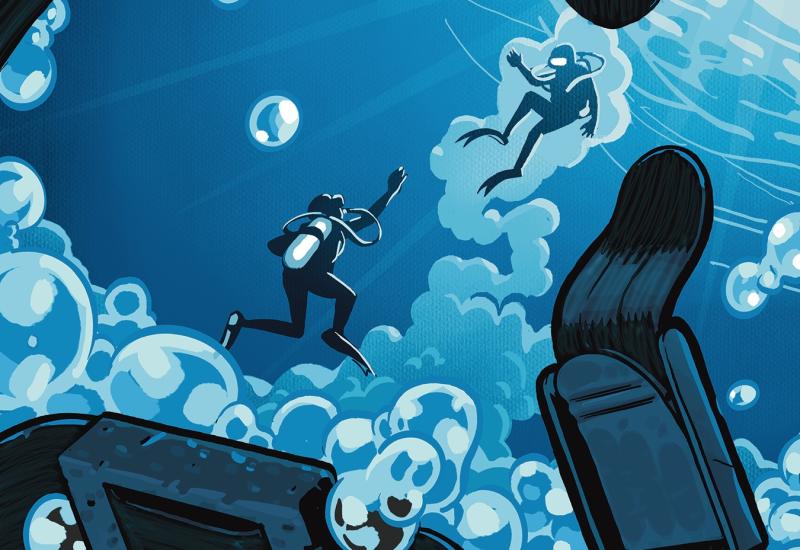Pushing the Limits Leads a Diver to the Chamber

Carlo GiambarresiYour dive computer really doesn’t know anything about you.
Every year during the Florida-lobster mini season, Greg got bug fever. He had already invited friends and family over for a cookout the next day, so he needed to catch his limit — he wanted to wow them with his lobster grilling. He wasn’t having much luck finding good locations with legal-size lobster, though. That meant he had to keep diving. He wasn’t going to let everyone down.
The diver
Greg was 37 years old and dived nearly every weekend. He was in good shape and didn’t take any medications. He was experienced, with more than 10 years since his certification.
The dives
Over a 14-hour period, Greg made six dives from a private boat with a couple of buddies. He claimed to be using a 32 percent nitrox mix on all of them and used a dive computer to track his status.
His dive series included: 1) 85 feet of seawater (fsw) for 50 minutes; 2) 75 fsw for 50 minutes; 3) 75 fsw for 35 minutes; 4) 70 fsw for 50 minutes; 5) 85 fsw for 50 minutes; and 6) 70 fsw for 50 minutes. Overall, the divers recorded four hours and 45 minutes of bottom time throughout the day, but did not record their surface intervals. Instead, they followed their computer's recommendations. From the beginning of the first dive to the end of the last, they spent approximately nine hours and 15 minutes out of the water. Greg was finally done for the day and ascended to the surface for the last time at 10 p.m.
The accident
About a half an hour after Greg and his buddies made it back to the dock, he noticed a pain in his upper left arm. The pain was in both his biceps and triceps; he described it as three out of 10, with 10 being the worst pain imaginable. He thought it was probably just muscle strain from carrying tanks and his dive equipment.
The pain persisted for another half an hour, and Greg realized there might be a bigger problem. He began breathing 100 percent oxygen using a demand valve, and a friend drove him to a local hospital. The hospital happened to have a hyperbaric chamber.
“Dive computers also do not analyze your heart rate, hydration level, fitness level, accumulated blood gases in your body, or any of the other factors that could contribute to decompression illness.”
The treating physician conducted a neurological assessment and didn’t find any problems, but the pain continued. Greg told the doctor that the pain was different than anything he had ever felt before. There was no way he could move or hold his arm that made it feel any better, or worse.
The doctor gave Greg a U.S. Navy Treatment Table 6. Two and a half hours after Greg first noticed the symptoms, he entered the hyperbaric chamber. When the nearly five-hour treatment ended, Greg’s pain was almost gone. He did have a slight burning feeling in his chest that was new, but that was attributed to the exposure to high concentrations of oxygen. It relieved itself later that day.
Greg’s doctor told him to wait six weeks before returning to diving. The residual arm pain lessened over a few days, and a week later, Greg realized it was gone. He has since returned to diving, although now he doesn’t do as many dives in a single day as he did the day he was hurt.
Analysis
Greg made an aggressive series of dives, but he stayed within the limits of his dive computer. He should have been fine, right?
Wrong. Dive computers are wonderful tools that have revolutionized the way we dive, giving us more bottom time and making it easier to plan multiple dives in a single day. However, they are simply mathematical algorithms, just like dive tables. The advantage they give is they recalculate your depth and time on a regular basis, essentially giving you a custom dive table every minute or so. The downside to this is they cut off the built-in safety margin that square dive profiles on a dive table provided.
Just because your dive computer says you can make the dive doesn’t mean you should. Even the most sophisticated model is simply a mathematical model. Use common sense and plan your dives.
Most dive computers also do not analyze your heart rate, hydration level, fitness level, accumulated blood gases in your body, or any of the other factors that could contribute to decompression illness. Following them blindly, or diving aggressively using a computer, still leaves the possibility of a diving-related injury.
As a side note, after his treatment, Greg admitted he wasn’t sure what his breathing-gas mix had been on the day of his injury. He dived as if he were on a 32 percent nitrox mix, but he wasn’t analyzing each tank before each dive, so he wasn’t sure how much nitrogen he was in fact inhaling. That is a serious mistake. Nitrox can give divers additional bottom time on every dive because they are absorbing less nitrogen with each breath. Greg put himself at risk by not analyzing the tanks. If they were filled with air, or a lower oxygen mixture, he was diving beyond the limits of his breathing gas. If they happened to be filled with a higher concentration of oxygen, he risked the possibility of an oxygen seizure.
Understand the signs and symptoms of decompression illness and alert others immediately if you have cause for concern.
Greg likely had a case of what is called Decompression Illness (DCI) Type 1 or Pain-Only DCI. DCI is a blanket term that includes Type 1, Type 2 Neurological DCI, and Arterial Gas Embolism. Pain-Only DCI exhibits as pain in the body, typically in the extremities and generally in joints like shoulders and elbows, that you can’t otherwise explain. It doesn’t change no matter how you move the extremity. The doctor’s neurological assessment indicated there was no problem, so nitrogen-gas bubbles had not formed against a nerve, which would have caused numbness or tingling. In the worst cases, neurological symptoms can cause paralysis or death.
It isn’t a definitive cause of decompression illness, but most experts agree that dehydration is likely a contributing factor. Greg spent 14 hours on the water on a boat diving. He made six dives and rested between each one. Diving itself causes a diver to become dehydrated through immersion diuresis. In short, water pressure forces blood in your extremities into your body core. Your kidneys recognize that you have too much fluid in your body and choose to eliminate it. This is why you always have to urinate when you dive. With that much time on a boat while diving, it would take a conscious effort for Greg to drink enough fluids to not be dehydrated.
On the upside, Greg did one thing exactly as he should have. He realized he had a pain in his arm that didn’t make sense and didn’t feel like anything he had ever felt before. It didn’t change no matter how he moved his arm. Within a half an hour of noting the pain, he was breathing 100 percent oxygen and heading to the hospital. Within two and a half hours, he was entering a hyperbaric chamber for treatment.
Statistics from Divers Alert Network say that the average wait time between symptom onset and treatment is closer to 17 hours. Most divers in this same situation would have chosen to wait until the morning to see if the pain was still there before seeking help. Greg’s decision to seek help immediately likely helped with the rapid resolution of the problem. While still treatable the next morning, more insult to the body tissues would have happened, and the injury would have been harder to treat.










